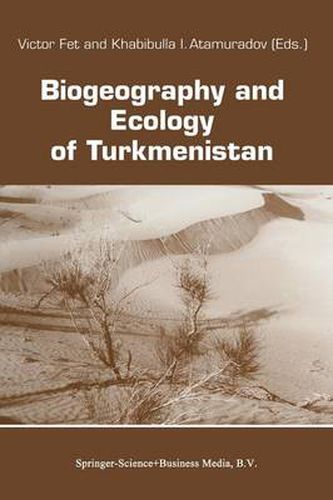Readings Newsletter
Become a Readings Member to make your shopping experience even easier.
Sign in or sign up for free!
You’re not far away from qualifying for FREE standard shipping within Australia
You’ve qualified for FREE standard shipping within Australia
The cart is loading…






This title is printed to order. This book may have been self-published. If so, we cannot guarantee the quality of the content. In the main most books will have gone through the editing process however some may not. We therefore suggest that you be aware of this before ordering this book. If in doubt check either the author or publisher’s details as we are unable to accept any returns unless they are faulty. Please contact us if you have any questions.
remnants of gene pools of these species. Badghyz Natural Reserve, established in 1941, became a refuge for the last existing population of the Turkmen onager (Equus hemionus onager) and a unique pistachio woodland. A new generation oflocal Turkmen scientists, many of whom were trained by the Russian researchers in the graduate schools of Moscow and Leningrad arose from the 1930s through the 1950s. The Turkmen Academy of Sciences and its journal, Proceedings (including the monthly biological series), served to record the results of diverse biological studies in the republic. While basic science in the Middle Asian republics rather gained from the Russian colonial influence, natural resources, in contrast, were severely damaged by the Soviet way of handling the economy and social issues. Severe environmental problems have been inherited by the now independent Turkmenistan, including overgrazed desert pastures, deforested mountains, depleted water resources, accumulated pesticides in cotton fields, declining populations of endangered species of animals and plants, and - worst of al- progressing, human-caused desertification (Kharin this volume). In order to approach a solution to these problems, scientists and officials in the republic will need the close attention and help of the international scientific community.
$9.00 standard shipping within Australia
FREE standard shipping within Australia for orders over $100.00
Express & International shipping calculated at checkout
This title is printed to order. This book may have been self-published. If so, we cannot guarantee the quality of the content. In the main most books will have gone through the editing process however some may not. We therefore suggest that you be aware of this before ordering this book. If in doubt check either the author or publisher’s details as we are unable to accept any returns unless they are faulty. Please contact us if you have any questions.
remnants of gene pools of these species. Badghyz Natural Reserve, established in 1941, became a refuge for the last existing population of the Turkmen onager (Equus hemionus onager) and a unique pistachio woodland. A new generation oflocal Turkmen scientists, many of whom were trained by the Russian researchers in the graduate schools of Moscow and Leningrad arose from the 1930s through the 1950s. The Turkmen Academy of Sciences and its journal, Proceedings (including the monthly biological series), served to record the results of diverse biological studies in the republic. While basic science in the Middle Asian republics rather gained from the Russian colonial influence, natural resources, in contrast, were severely damaged by the Soviet way of handling the economy and social issues. Severe environmental problems have been inherited by the now independent Turkmenistan, including overgrazed desert pastures, deforested mountains, depleted water resources, accumulated pesticides in cotton fields, declining populations of endangered species of animals and plants, and - worst of al- progressing, human-caused desertification (Kharin this volume). In order to approach a solution to these problems, scientists and officials in the republic will need the close attention and help of the international scientific community.